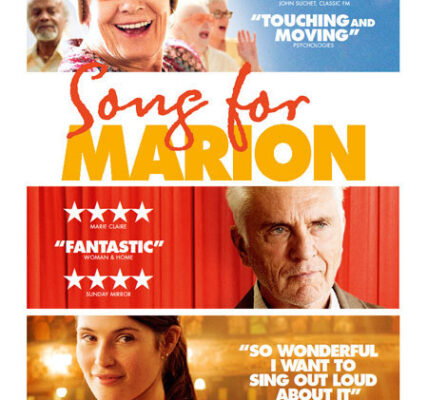New Horizons – Producers Claire Jones & Anna Higgs on the release strategy for ‘A Field In England’
Ben Wheatley’s new film A Field in England chalked off a UK distribution ‘first’ when it was released in cinemas, on DVD, across VOD platforms and on Film4 on the same day in July this year. Here, producer Claire Jones and executive producer Anna Higgs reveal how and why they came up with this groundbreaking new strategy, and the impact it had on the making of the film.
Claire Jones, producer
How did you first come across Ben Wheatley?
CJ: I met Ben about 10 years ago, when I was running an Internet viral company called Tomboy Films. At the time, no one was really doing virals, and we felt we were the only people working on them in London. Ben came to my attention; he was the king of the Internet. He was directing a lot of content, and was one of the big players on Beta.com. He was constantly making things at this point, so we decided to sign him to the company.
What was your working relationship like from early on?
CJ: We were making digital content together for clients around the world, but because Internet content didn’t generate—and still doesn’t generate—any money, we had to learn how to stretch budgets and find left-field ways of creating content for very little outlay. A Field in England, for example, had a smaller budget than Kill List.
Kill List was your breakthrough film; how did that come to being?
CJ: Kill List was able to happen because [Wheatley’s debut feature] Down Terrace was such a big hit on the festival circuit. It’s very hard to get a debut film off the ground, but once you’re able to do so it does open some doors. Down Terrace managed to spark some interest from Warp X, who are the lower-budget, experimental arm of Warp. Warp’s standing in the industry led to people being willing to invest in the film and, once the money was in place, they very much left us to get on with it.
It was an incredibly challenging shoot. Our budgets were tiny but we were trying to achieve the highest production values possible. One night sequence involved hundreds of people stood naked in the forest, with flames going off left, right and centre. We had to push ourselves, but it gave us all confidence.
How has your relationship with Ben changed over the decade you’ve worked together?
CJ: I try to be quite a hands-on producer, which you have to be on smaller films. When you work with a director for a long period of time, you develop a shorthand. You know what’s important for them, and you know what they’ll be willing to compromise on. I have faith in Ben, so if he tells me he can shoot a certain scene in a certain amount of time, I don’t ask questions.
A Field in England is pioneering a multi-platform distribution strategy; why do that?
CJ: It was a project that was conceived as more of an art-house, experimental film, and for that to go anywhere you can’t look at traditional distribution models any more. You’re never going to put A Field in England on 200 screens across the country. The truth of the matter is this film can’t have as wide a release as even Sightseers did. It doesn’t have the audience market for that. It was never conceived as something for the mass market; it’s a black-and-white art-house film about the English Civil War. It doesn’t have broad appeal and that’s a reality we have to face. You’re not going to make a lot of money; in fact you’ll probably get a loss. So you have to look at it in a different way.
Kill List only came out on 50 screens theatrically, but six months later it was screened on Film4 and got a million viewers. Film4.0 are all about new ways of finding audiences; they live for different film and distribution models. We’ve partnered with Picturehouse and we’ll get it on a certain amount of screens across the country, which is fantastic, but not everyone in the country will be able to even be near one of those cinemas. So how can we get the widest audience to our art-house film? A television slot, DVDs and a really high-spec streaming service, we thought, might provide some answers to that.
Did the unconventional distribution of the film affect the financing and production?
CJ: In terms of the production of the film, it affects very little. What you want, first and foremost, is to make a great film, and that never changes. Film4.0 fully financed the film, and that makes things a lot easier as well. You do have to think about developing assets for the different platforms; they’re not just an afterthought. You have to think about the extras—like the masterclass and streaming system—right from the top.
Anna Higgs, executive producer
When did you become part of A Field in England?
AH: I’m the executive producer on the film, so I was involved right from the first conversations with Ben and the idea he had, right through to the financing of the film, how we got it made, and then onto shaping the release plans and distribution strategy. Ben and his producers Andy [Starke] and Claire seized the opportunity to take on an experiment here. Film4 financed the film completely, which is unusual for us, but that meant we had the freedom to shape it into something exciting.
Why jettison conventional distribution for this film?
AH: We decided this would be the best strategy for this film. Ben went to town on an idea he’s had for a long time. It’s an experimental film, and the team wanted to explore how we could get it out there. We’re looking at a landscape of 12 to 14 films being released every week in cinemas, and we never have the press and advertising budgets to match the big studios. In a conventional model, it’s very hard for an indie film to break through and create enough buzz to hold its screens. So we wanted to work a way that would allow as many different people as possible to see it in as many different ways as possible. But a way that would also create enough buzz to allow the film to break through and build a life of its own.
Other films have tried a multi-platform release; what’s different about your strategy?
AH: I don’t think any other film has also aired on TV. That’s a bold experiment, I think. The audience want to see groundbreaking stuff, but it’s difficult for them to do so a lot of the time. We are going to put this film out on every single platform, and really support each one and have something special for each one. Often you see films going straight online or to DVD with a one-day theatrical release that aren’t films that were ever really believed in. It feels like a ‘what the hell, let’s see what happens’ gesture. For us, we believe the audience is very much there for A Field in England. We think it could become a cult classic.
Are there any particular concerns you’ve talked about in pursuing this strategy?
AH: There’s a lot of eyes on us, and we’re aware of that. People have said to me, if it’s going out on telly, how is this going to impact on the cinema? But I’ve also witnessed plenty of people who are vowing to watch the film on different platforms. With each platform we’ve made something bespoke, and we’ve tried to craft each one in a way that ensures they complement each other. We’re in a joint venture, and if one platform gets a bounce then that benefits us all.
Is there a risk the film industry is more experimental than the audience?
AH: I don’t think so. You have to be agile these days. Cinema is an art form that has always evolved. People are talking about content maps now, because you see people on the train into work looking at a film on their iPad. Some people are horrified by that but, from my point of view, the more people are loving cinema because they’re able to enjoy it in the way they want to, the better. •
A Field in England was released in theatres, on VOD, DVD and on Film4 on Friday, 5 July 2013.
Taken from movieScope magazine, Issue 35 (July/August 2013)











